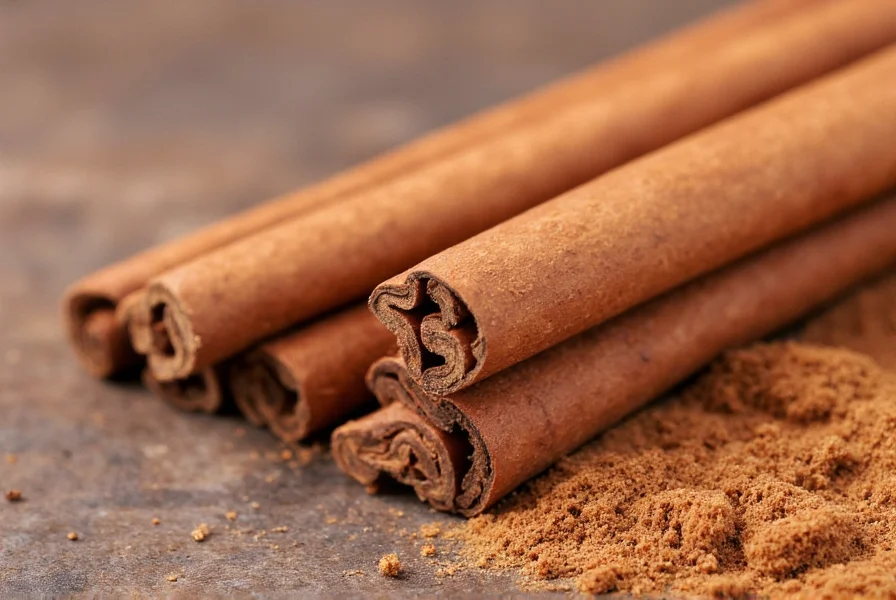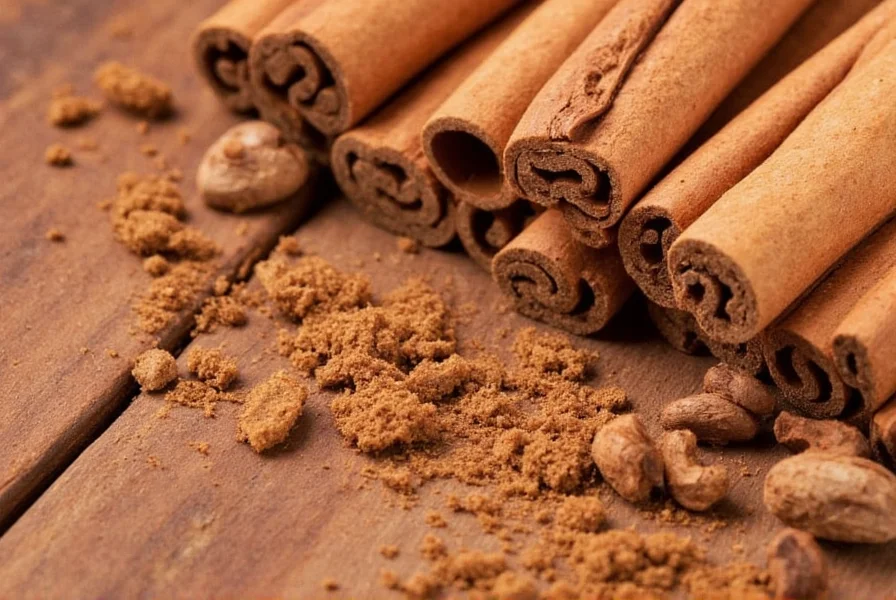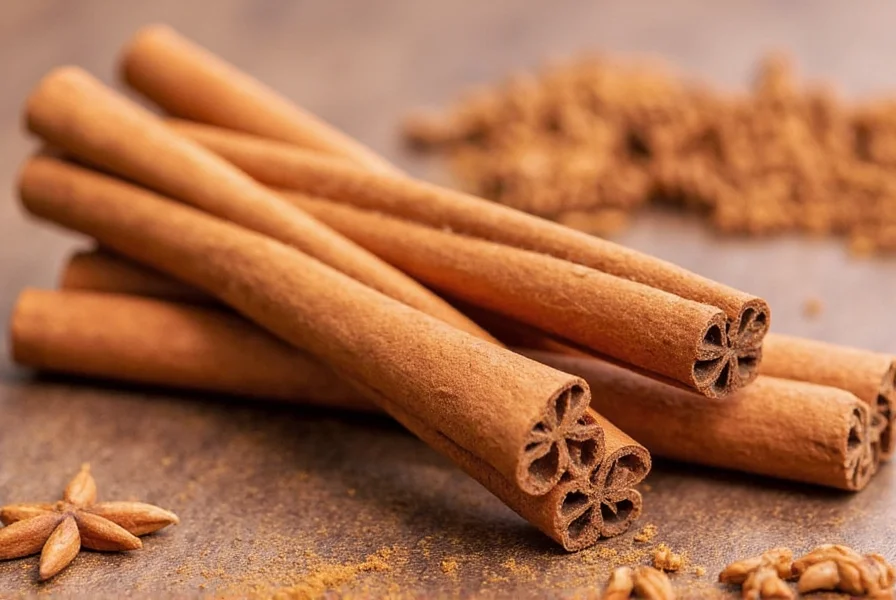When exploring natural spices with potential health benefits, cinnamon frequently tops the list. But not all cinnamon varieties deliver the same health profile. Understanding the differences between cinnamon types is crucial for making informed dietary choices that maximize benefits while minimizing potential risks.
Understanding Cinnamon Varieties
Cinnamon isn't a single spice but rather comes from different species of Cinnamomum trees. The two primary types available globally are Ceylon cinnamon (Cinnamomum verum) and Cassia cinnamon (primarily Cinnamomum cassia), with Cassia dominating approximately 90% of the US market due to its lower cost and stronger flavor.
Ceylon cinnamon, often called "true cinnamon," originates from Sri Lanka and features multiple thin, delicate layers that form a tight scroll. Cassia cinnamon, primarily from China and Indonesia, has a thicker, harder single-layer bark with a more intense, slightly bitter flavor profile.

The Critical Health Difference: Coumarin Content
The most significant factor determining the healthiest cinnamon type is coumarin content. Coumarin is a naturally occurring compound that gives cinnamon its distinctive aroma but can cause liver damage in high doses.
| Cinnamon Type | Coumarin Content (per teaspoon) | Maximum Safe Weekly Intake |
|---|---|---|
| Ceylon cinnamon | 0.004-0.14 mg | Several tablespoons |
| Cassia cinnamon | 7-18 mg | Approximately 1 teaspoon |
According to the European Food Safety Authority, the acceptable daily intake of coumarin is 0.1 mg per kilogram of body weight. For a 150-pound person, this translates to approximately 6.8 mg daily. Just one teaspoon of Cassia cinnamon often exceeds this limit, while Ceylon cinnamon contains negligible amounts.
Comparing Health Benefits
Both cinnamon types offer impressive health properties, but their benefit-risk profiles differ significantly:
Antioxidant Capacity
Both varieties contain potent antioxidants, particularly polyphenols. Research published in the Journal of Agricultural and Food Chemistry shows Ceylon cinnamon has comparable antioxidant activity to Cassia, despite the common misconception that Cassia is superior in this regard.
Blood Sugar Regulation
Multiple studies, including research in the Journal of the Academy of Nutrition and Dietetics, indicate both types may help improve insulin sensitivity and lower blood glucose levels. However, the potential liver toxicity from regular Cassia consumption could counteract these benefits for some individuals.
Anti-Inflammatory Properties
The cinnamaldehyde in both cinnamon types demonstrates anti-inflammatory effects. A 2020 review in Nutrients noted these properties could potentially help reduce risk factors for chronic diseases, though more human studies are needed.
Scientific Evidence on Cinnamon Health Benefits
While popular media often overstates cinnamon's health effects, scientific research reveals more nuanced findings:
- A comprehensive 2022 meta-analysis in Complementary Therapies in Medicine concluded that cinnamon supplementation showed modest improvements in fasting blood glucose but had limited impact on long-term HbA1c levels
- Research in the American Journal of Clinical Nutrition found that 6 grams of cinnamon daily provided no significant benefits for blood pressure in people with type 2 diabetes
- Studies on cinnamon's antimicrobial properties show promising results in laboratory settings, but human applications remain limited
Most health professionals agree that while cinnamon offers potential benefits as part of a balanced diet, it shouldn't be viewed as a standalone treatment for medical conditions.
Practical Guidance for Consumers
Choosing the healthiest cinnamon involves more than just selecting Ceylon over Cassia. Consider these practical recommendations:
How to Identify Ceylon Cinnamon
Look for these distinguishing characteristics:
- Multiple thin, papery layers that form a tight scroll (like a cigar)
- Lighter brown color compared to Cassia's dark reddish-brown
- Milder, sweeter flavor profile
- Higher price point (typically 5-10 times more expensive than Cassia)
Safe Consumption Guidelines
For regular consumption:
- Ceylon cinnamon: Up to 1-2 teaspoons daily is generally considered safe for adults
- Cassia cinnamon: Limit to 1/2 teaspoon occasionally, not daily
- Individuals with liver conditions should consult healthcare providers before regular consumption
When Cassia Might Be Acceptable
Cassia cinnamon can still be part of a healthy diet when used sparingly:
- As an occasional flavoring in baked goods
- In recipes where only small amounts are used
- When combined with other spices to reduce overall quantity needed
Making the Healthiest Choice
While both cinnamon varieties offer potential health benefits, Ceylon cinnamon emerges as the healthiest choice for regular consumption due to its dramatically lower coumarin content. This distinction becomes particularly important for individuals using cinnamon as a daily dietary supplement or those with pre-existing liver conditions.
When selecting cinnamon for health purposes, prioritize Ceylon cinnamon for daily use while reserving Cassia for occasional culinary applications. Always purchase from reputable sources that clearly label the cinnamon type, as many products simply say "cinnamon" without specifying the variety.

Remember that no single spice can transform your health. The healthiest approach combines moderate cinnamon consumption with an overall balanced diet, regular physical activity, and other evidence-based health practices.
Is Ceylon cinnamon worth the higher price?
Yes, for regular consumption, Ceylon cinnamon's significantly lower coumarin content makes it worth the higher cost, especially if you plan to use cinnamon daily for potential health benefits. The price difference becomes negligible when calculated per safe serving size.
Can I substitute Cassia for Ceylon in recipes?
You can substitute Cassia for Ceylon in most recipes, but use approximately half the amount due to Cassia's stronger flavor and higher coumarin content. For daily consumption, Ceylon remains the safer choice, while Cassia works well for occasional baking where only small amounts are used.
How much cinnamon should I consume daily for health benefits?
Research suggests 1-2 teaspoons of Ceylon cinnamon daily provides potential benefits without safety concerns. For Cassia cinnamon, limit daily intake to 1/2 teaspoon maximum due to coumarin content. Always consult with a healthcare provider before using cinnamon therapeutically.
Does cinnamon lower blood sugar effectively?
Studies show cinnamon may provide modest short-term improvements in blood sugar levels, but effects on long-term markers like HbA1c are less consistent. It should complement, not replace, standard diabetes management approaches. The evidence supports cinnamon as a potential dietary addition rather than a primary treatment.
How can I verify I'm buying genuine Ceylon cinnamon?
Look for specific labeling that says "Ceylon cinnamon" or "Cinnamomum verum" rather than just "cinnamon." Reputable brands often mention Sri Lanka as the origin. The physical characteristics—multiple thin layers forming a tight scroll, lighter color, and sweeter aroma—are also reliable indicators. When in doubt, specialty spice retailers typically provide more accurate labeling than generic grocery stores.











 浙公网安备
33010002000092号
浙公网安备
33010002000092号 浙B2-20120091-4
浙B2-20120091-4